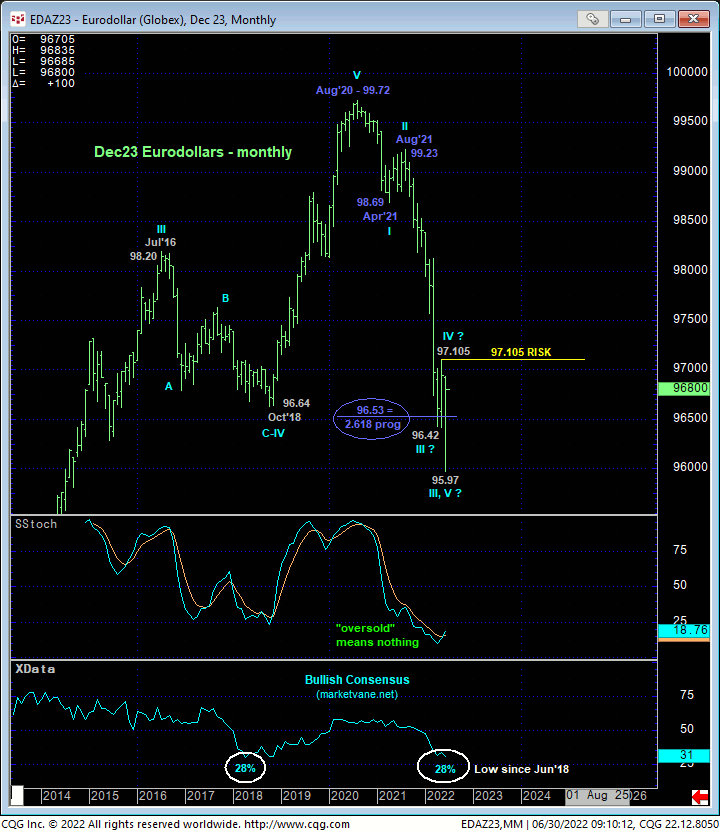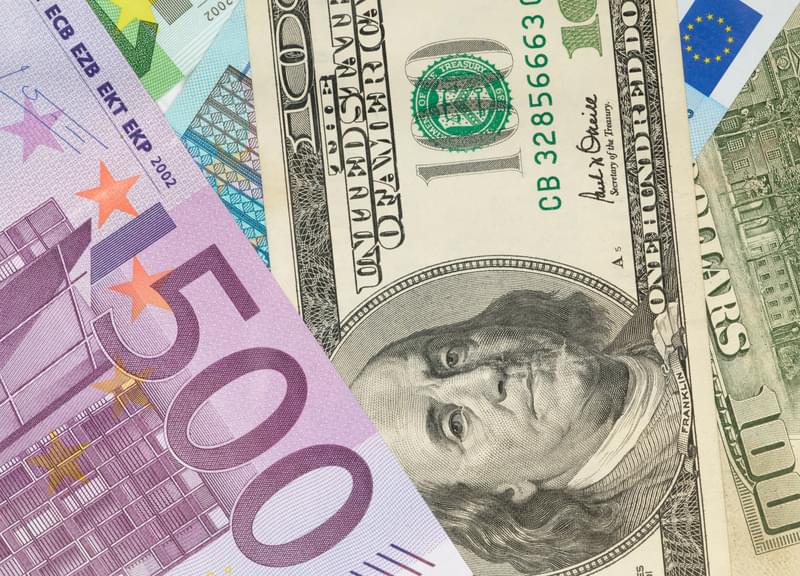
SEP 10-Yr T-NOTES
This morning’s break above 23-Jun’s 118.08 high reinforces our base/correction count introduced in 17-Jun’s Technical Blog and leaves Tue’s 116.11 low in its wake as the latest smaller-degree corrective low this market is now minimally required to fail below to arrest the developing and at least intermediate-term uptrend and expose at least an interim corrective relapse. Per such, this 116.11 low serves as our new short-term risk parameter from which non-bearish decisions like short-covers and bullish punts can be objectively rebased and managed.
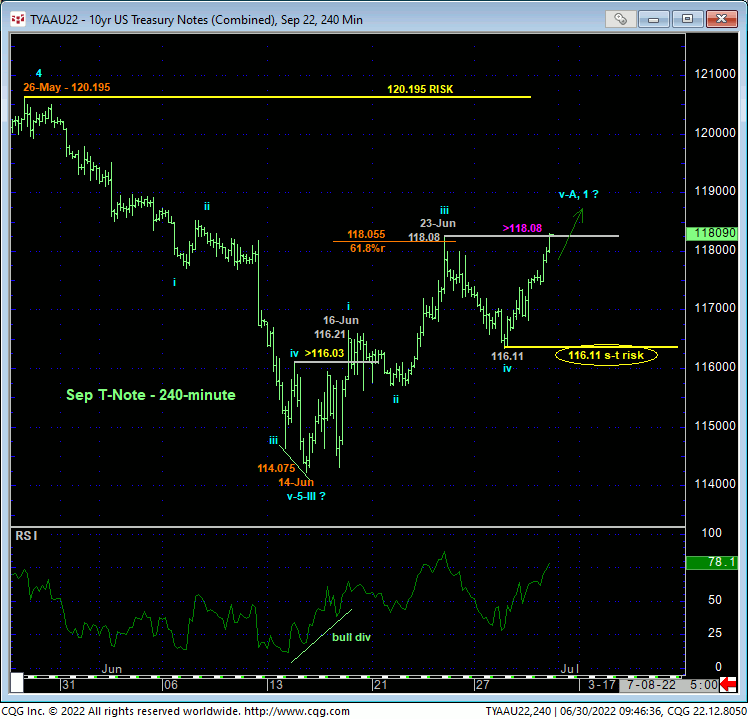
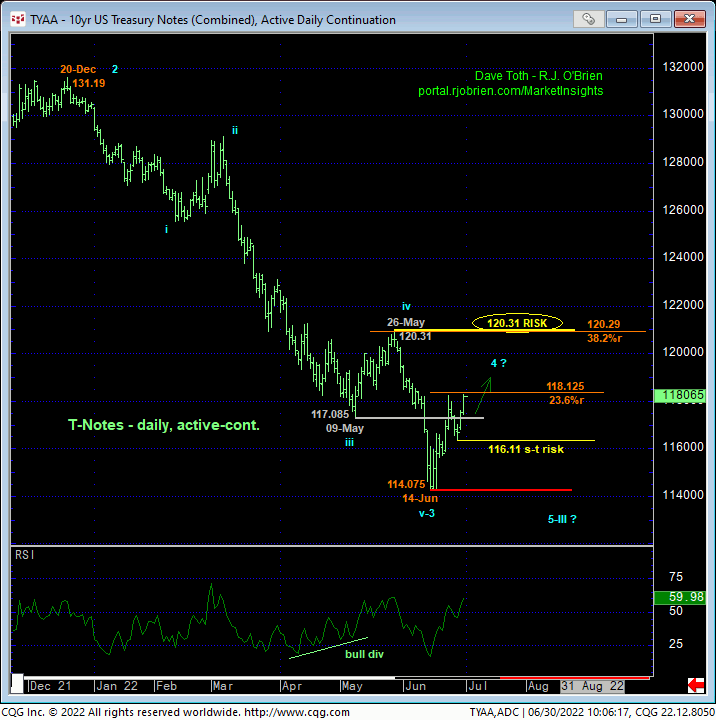
From a long-term perspective, commensurately larger-degree strength above 26-May’s 120.31 larger-degree corrective high remains required to confirm a bullish divergence in momentum of a scale sufficient to threaten the secular bear trend. This level remains intact as a bear risk parameter for long-term institutional players. What the market has in store between 116.11 and 120.31 is now anyone’s guess, but as indicated above, a bearish divergence below 116.11 is, at this juncture, required to break the current intermediate-term uptrend.
On a 10-yr daily log close-only yield basis below, the rate rise from 03Dec21’s 1.348% low is the prettiest 5-wave Elliott sequence you’ll find. And what makes this count even more compelling is that the length of this (suspected 3rd-Wave) rally came within 4 basis point of its (3.532%) 2.618 progression of Aug-Oct’21’s (suspected 1st-Wave) rally from 1.176% to 1.699%. The pertinence of this Fibonacci fact and Elliott observation is that, if correct, the market would arguably be in a 4th-Wave correction of the move from 1.348% to 3.489% where even the Fibonacci minimum 23.6% and 38.2% retracements don’t cut across until 2.788% and 2.426%, respectively. That’d be a relatively sizeable correction in yields.
Basis the contract above, the market has just today met the 23.6% retrace of Dec-Jun’s 131.19 – 114.075 decline, with, ironically, the 38.2% retrace of this decline cutting across at 120.29, just a couple 32s away from 26-May’s key 120.31 larger-degree corrective high and key long-term bear risk parameter.
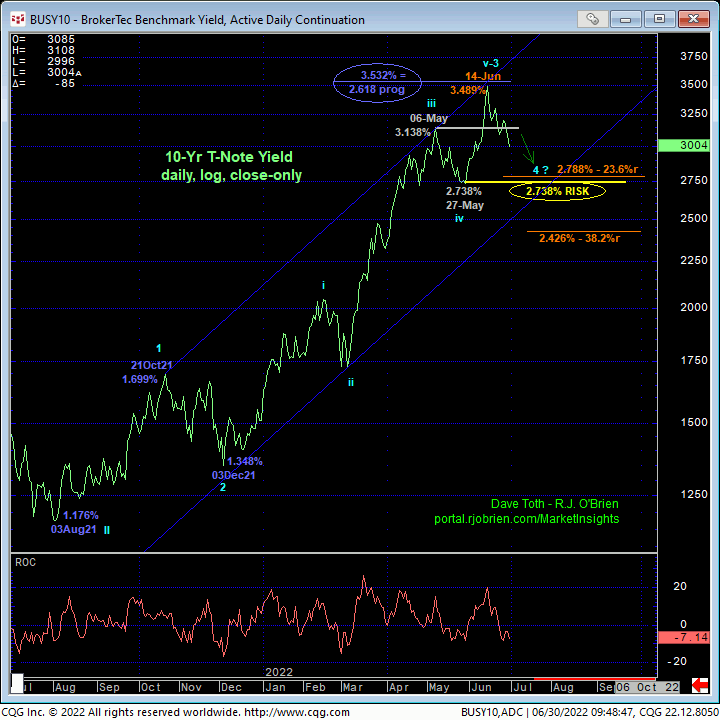
Stepping back even further, the weekly chart below shows the sheer magnitude of the secular bear market from Aug’20’s 140.13 all-time high. At best, Jun’s 114.075 low completed only the 3rd-Wave of an eventual 5-wave sequence down. But because of the magnitude of this bear market, even a relatively minor corrective hiccup could be nominally extensive, spanning potentially a couple months and perhaps a recovery above 120.31.
These issues considered, a cautious bullish stance remains advised for shorter-term traders with a failure below 116.11 required to move to neutral. Longer-term institutional are OK to maintain a cautious bearish policy with a recovery above 120.31 required to warrant moving to a neutral/sideline position. We will keep a keen eye out for a countering bearish divergence in short-term momentum to stem the current intermediate-term rally and expose at least a (B- or 2nd-Wave) corrective relapse and possibly the resumed secular bear.
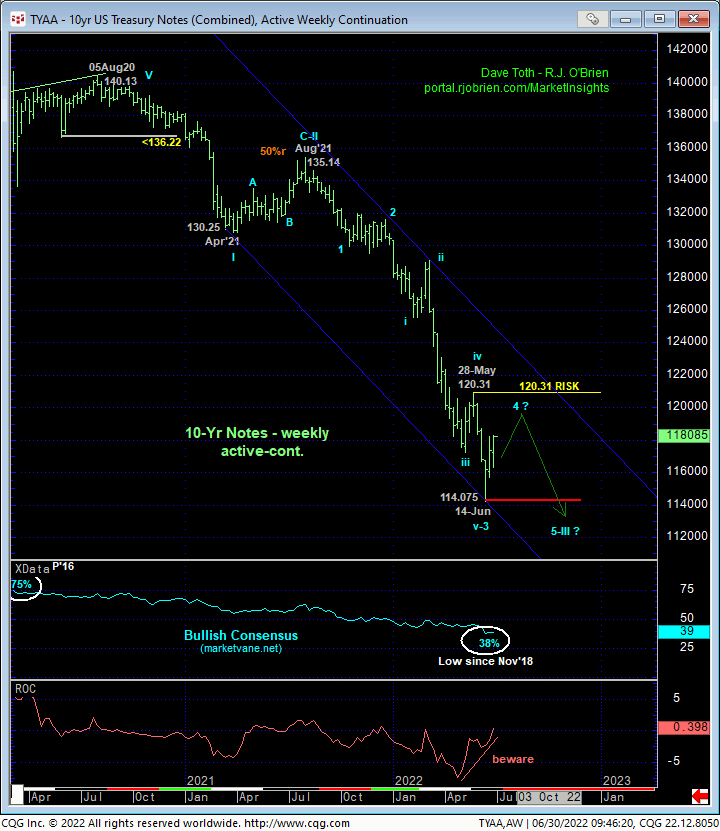
DEC23 EURODOLLARS
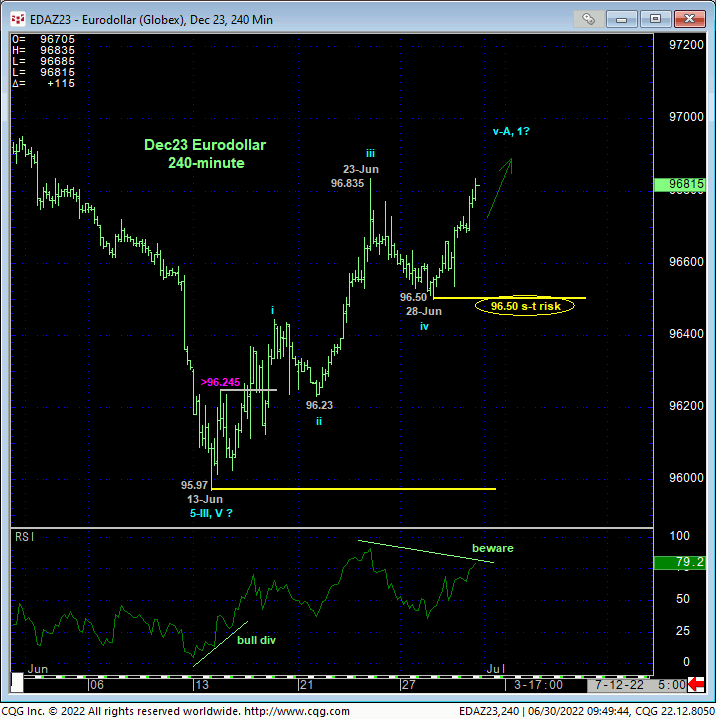
The technical construct and expectations for the Dec23 eurodollar market are identical to those detailed above in T-notes with the past couple days’ rally defining Tue’s 96.50 low as the latest smaller-degree corrective low and new short-term risk parameter from which traders can objectively rebase and manage non-bearish decisions like short-covers and bullish punts. Given the impulsive nature of the past couple weeks’ rally, this may only be the initial A- or 1st-Wave of a larger-degree correction higher that could span weeks or even months.
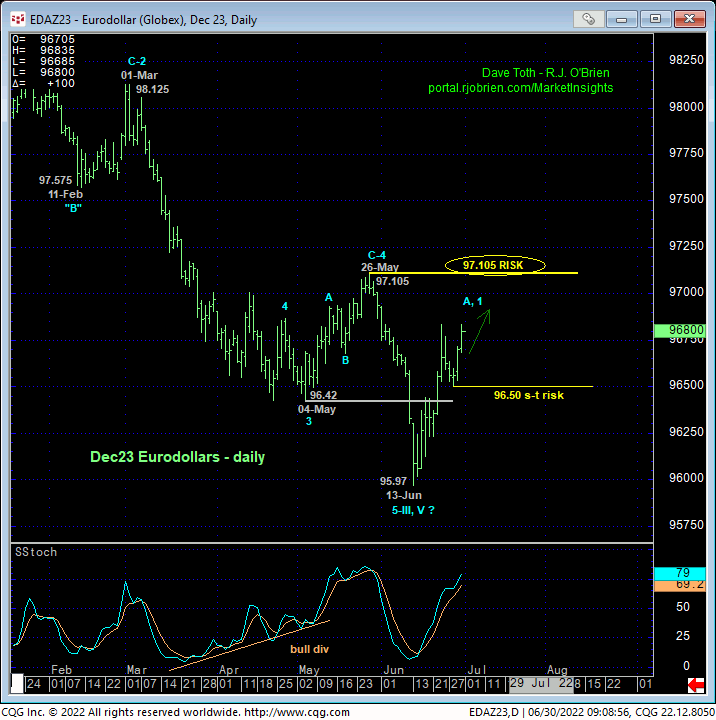

From a long-term perspective however, a recovery above 26-Mahy’s 97.105 larger-degree corrective high remains required to break the major downtrend and confirm at least a much larger-degree correction higher. The return to historically bearish levels in the Bullish Consensus (marketvane.net) and clearly waning downside momentum are elements typical of base/correction/reversal environments.
These issues considered, a bullish policy remains advised for shorter-term traders with a failure below 96.50 required to move to the sidelines. Longer-term institutional players are OK to maintain a cautious bearish policy, with a recovery above 97.105 required to negate this call and warrant its cover.
